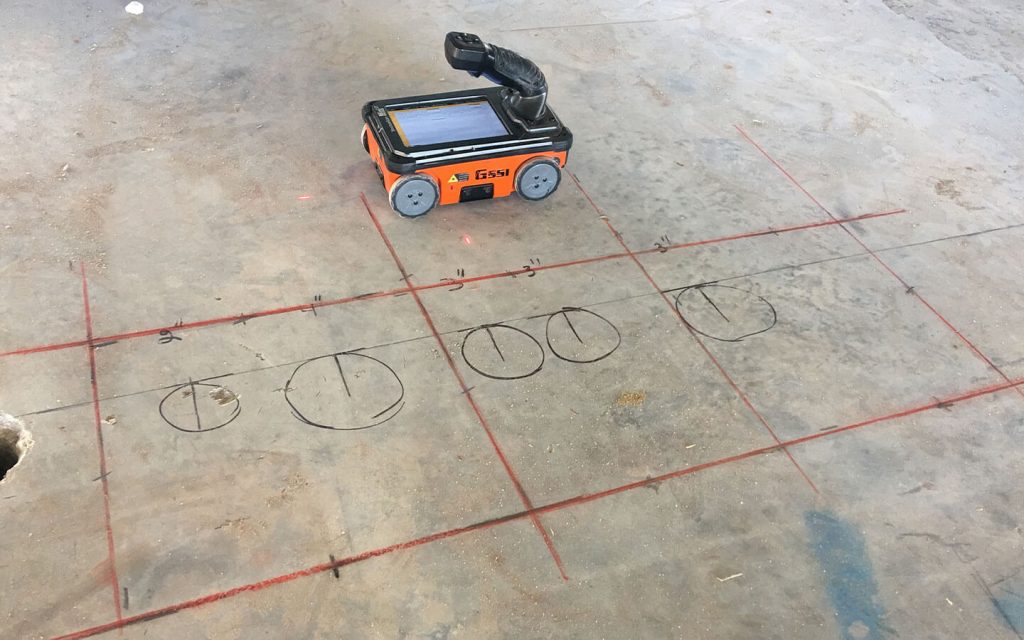Professional Tips for Optimum Concrete Scanning Results
Professional Tips for Optimum Concrete Scanning Results
Blog Article
Reveal the Transformative Power of Concrete Scanning in Taking Full Advantage Of Effectiveness and Safety And Security
Concrete scanning has arised as an important tool in the building market, offering unrivaled advantages in boosting project performance and making certain safety and security standards. The transformative power of concrete scanning exists in its ability to provide real-time information and comprehensive understandings, changing just how jobs are planned and performed.
Importance of Concrete Scanning
Guaranteeing the structural stability and security of building jobs starts with the critical step of performing comprehensive concrete scanning. Concrete scanning is a non-destructive technique used to find and map subsurface aspects within concrete frameworks. This process is essential in determining potential threats, such as rebar, post-tension cable televisions, and channels, that may be hidden within the concrete. By using advanced innovations like ground-penetrating radar (GPR) and electromagnetic induction, building and construction groups can precisely find these elements without creating any type of damages to the framework.
The importance of concrete scanning can not be overstated, as it plays a vital duty in protecting against mishaps, decreasing job delays, and guaranteeing the long-lasting resilience of the building and construction. By recognizing prospective dangers prior to the construction stage starts, home builders can implement ideal security procedures and make informed decisions pertaining to the style and execution of the task. Additionally, concrete scanning helps in enhancing job timelines and spending plan by staying clear of unanticipated prices and hold-ups that might emerge as a result of unforeseen obstructions within the concrete. Ultimately, purchasing thorough concrete scanning is a proactive approach that improves both effectiveness and safety in building and construction jobs.
Exactly How Concrete Scanning Functions
Concrete scanning operates as a vital tool in building tasks by using innovative innovations to spot and map subsurface aspects without creating structural damage. Ground Penetrating Radar (GPR) and Electromagnetic Induction (EMI) are 2 primary techniques used in concrete scanning.
Throughout the scanning procedure, the information gathered is analyzed in real-time, enabling prompt recognition of prospective threats or obstacles underneath the surface. This information aids in decision-making, guaranteeing that building tasks continue safely and effectively. In addition, 3D imaging software program can be used to develop topographic maps of the subsurface aspects, better improving project preparation and execution. By utilizing these advanced modern technologies, concrete scanning dramatically reduces the threat of expensive damages and injuries on construction sites.
Advantages of Concrete Scanning
Making use of advanced scanning technologies in building and construction projects supplies a plethora of advantages, enhancing both effectiveness and safety and security on-site. One of the main advantages of concrete scanning is the capacity to find and locate ingrained objects such as rebar, post-tension cables, and channels precisely. By recognizing these elements before drilling or cutting right into concrete structures, the threat of unintended strikes is dramatically minimized, avoiding potential injuries to employees and damage to the framework itself. Furthermore, concrete scanning helps in preparation and making better, as it supplies exact info about the place and deepness of structural parts.

Situation Researches: Concrete Scanning Success

In an additional instance, a building business used 3D concrete scanning to analyze the condition old concrete frameworks in a historical building. The thorough scans given beneficial understandings right into the level of degeneration and helped focus on upkeep efforts successfully. By proactively addressing locations of concern recognized via scanning, the company had the ability to expand the life-span of the framework and guarantee resident safety.
These study highlight the transformative power of concrete scanning in boosting efficiency, accuracy, and security in construction projects.
Applying Concrete Scanning in Projects
Executing sophisticated scanning modern technologies throughout construction projects has actually ended up being increasingly important for boosting accuracy and security. By integrating concrete scanning into job planning and execution, construction groups can determine possible dangers, such as rebar or post-tension wires, hidden within concrete frameworks. This aggressive approach decreases the risk of crashes, delays, and costly rework, eventually leading news to much more effective task timelines and budget plans.
To carry out concrete scanning successfully, project managers ought to team up very closely with knowledgeable scanning specialists to determine one of the most ideal scanning techniques for the specific task demands. Involving scanning professionals from the beginning of a project enables the group to produce extensive scanning plans that deal with essential areas of concern and make certain complete information collection.
Moreover, including concrete scanning into normal project process can simplify decision-making procedures, as real-time scan data offers immediate understandings into the condition of concrete frameworks - Concrete Scanning. This data-driven method helps with notified problem-solving and enables groups to make changes promptly, promoting a culture of performance and safety throughout the task lifecycle

Verdict
To conclude, concrete scanning plays an important function in improving basics performance and safety in building tasks. By making use of sophisticated innovation to discover and map out underlying frameworks within concrete, this procedure aids to stop expensive blunders, ensure structural stability, and reduce threats on site. With the capacity to discover covert components and give exact data, concrete scanning proves to be an important device for enhancing project end results and taking full advantage of overall success.
Concrete scanning is a non-destructive method made use of to detect and map subsurface aspects within concrete frameworks. Additionally, concrete scanning assists in enhancing task timelines and budget by preventing unexpected expenses and delays that might emerge due to unanticipated obstructions within the concrete. One remarkable instance study involves a large-scale renovation project where concrete scanning played a vital role in guaranteeing project success.In another situation, a building company made use of 3D concrete scanning to examine the problem of maturing concrete frameworks in a historical building. By integrating concrete scanning right into task planning and execution, building and construction teams can recognize prospective dangers, such as rebar or post-tension cable televisions, hidden within concrete structures.
Report this page